Off the Beaten Path: Maharashtra’s Three Hidden Gems
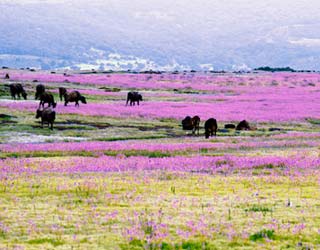 (Photos: Hemant Patil)
(Photos: Hemant Patil)Off the Beaten Path...
Mumbai residents are known to hop over to popular Mahabaleshwar and Matheran on a whim. In contrast, MORACHI CHINCHOLI, NIGHOJ, and KAAS PLATEAU are not well-known destinations by any means. But don’t let the obscurity of these destinations fool you. They are worthy stops for eco-tourists seeking nature and intrigue.
For those who know Maharashtra only by Mumbai, its bustling metropolis of over 12 million people, it is hard to imagine there is so much pristine natural beauty just hours outside its polluted smog cover. Besides its known hill stations, the state is abundantly blessed with lush greenery, mountains, waterfalls, and caverns… and a town that has more peacocks than people as its residents, a river with a wonder of rock formations and natural potholes that are known to be one-of-a-kind, and a valley of flowers that is one of the richest biodiversity spots in the world.
Here is the rundown on these three gems from the world of eco-tourism.
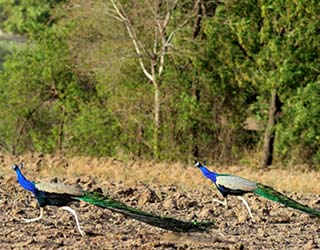
Morachi Chincholi
The majority of Morachi Chincholi’s two-legged population is comprised not of humans but of peacocks. So much so that this quaint village gets its name from India’s national bird who enjoys a privileged status here. In Marathi mor means peacock and chincholi means tamarind trees, both abundantly found here. As you enter the 1350-acre village that has been converted into the peacock sanctuary, you are instantly greeted by the unmistakable cry of the birds. Housed in their natural habitat, atop trees or in the fields, they are comfortable with the village folk and follow them around.The birds are resplendent in their grace and beauty, and looking at them, it’s hard not to be reminded of the stories about the peacock in Indian mythology. In Hindu legend, the peacock is the vehicle of Lord Karthikeya and also of Goddess Saraswati. Lord Krishna always wore a peacock feather in his crown.
During the day the peacocks remain hidden atop or perched in the tamarind trees but early morning and late evening they come out to peck in the fields.
Reports of peacock population dwindling on account of poaching, habitat loss and contamination of food sources are common. Be it for their feathers or their flesh or even their fat, which some claim is a cure for arthritis, peacocks are mercilessly poached. The birds are stalked and killed rampantly in Punjab, Haryana and around Delhi, known as a peacock-rich belt. It is refreshing to be in Morachi Chincholi where the birds flourish because of the ban on poaching. The peahen normally lays four eggs at a time on the ground. In Morachi Chincholi the eggs are not stolen and sold for profit. The easy availability of food in the form of worms and grains for the chicks also helps.
The tourist guides here are the local farmers who can tell you all you want to know about peacocks and other birds like the Brahminy Mynas and Jungle Babblers. We enjoyed a homemade meal whose ingredients were freshly procured from the farms in the village.
In this pollution-free village, we learned about the farming practices followed by the farmers, went for a bumpy bullock-cart ride, tried our hand at kite-flying and feeding cows, buffaloes and chickens, played gilli danda and marbles, visited the old Khandoba temple of the village and enjoyed a bonfire party at night followed by star-gazing.

The largest natural river potholes in Asia at Nighoj are a truly unique sight.
NighojThe first time we heard about Nighoj was from an avid traveler like ourselves. “You have to see the place with your own eyes to truly take in this natural wonder. I promise that you will not be disappointed,” he babbled like a kid. This gentleman has seen most of India and is overtly critical by nature so we were curious to visit the place that he had just praised to the skies. Our trip was smooth and the road was good. Shirur, where Nighoj is located, is mainly an agricultural area which still follows the rustic way of life—fields with varied crops, bullocks tied outside small huts with poultry running about their mud-splattered porches, haystacks near the fields, villagers enjoying a nap on charpois made of coir with wooden legs, and children waving shyly at us. We passed by a few fruit farms as well. Our eagerness to see what are believed to be the largest natural river potholes in Asia soared as we drove on the last 3-km stretch of bumpy road to get to the riverbed.
When we reached the place we gasped in amazement. The riverbed and the walls of the gorge have fascinating formations of rocks and potholes as far as the eye can see. Nighoj resembles a smooth-stone gorge that has been hammered by nature into interesting shapes and crevices.
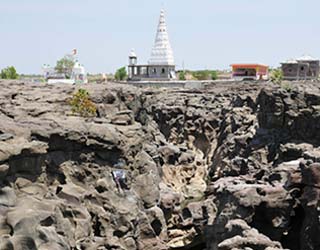
The river flow has been called “vesicular,” with scoriaceous basalt forming the top layer, and the lower layer composed of compact basalt through which the river flows. The Kukadi River flowing by the village takes a semi-circular turn, causing swirling water currents that beat relentlessly against the hard basalt rock bed, resulting in this fascinating geological wonder of the Deccan plateau.
We paid homage to the Goddess Malaganga, whose temple is located on the riverbank. The villagers call the potholes kunds and the temple Goddess is referred to as Kundmauli.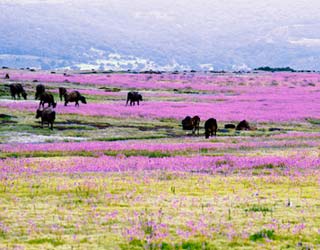
The Kaas Plateau boasts of more than 200 varieties of wild flowers, herbs, orchids, shrubs and insectivorous plants, including 30 endangered species, 16 kinds of butterflies, 42 local bird species, 29 migratory bird families, six reptile species and 12 mammal species.
Kaas PlateauBetter known as Maharashtra’s valley of flowers, Kaas near Satara has exotic flower species that bloom in delightful colors. UNESCO has declared the Western Ghats (in which Kaas is tucked) one of the most biodiversity-rich spots in the world.
Monsoon is when the plateau attracts hundreds of visitors with smiles on their faces and cameras in their hands. More than 200 varieties of wild flowers, herbs, orchids, shrubs and insectivorous plants, including 30 endangered species, grow here. You can get to see in Kaas 16 kinds of butterflies, 42 local bird species, 29 migratory bird families, six reptile species and 12 mammal species.
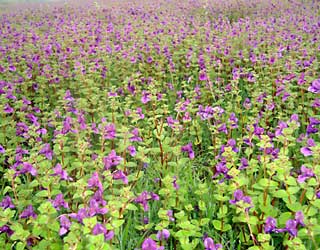
The flowers were truly enchanting. We loved the impatiens, named so because when a drop of water falls on the seed, it bursts open, cracking impatiently in its eagerness to germinate. All the tiny plants on the plateau fight against the Karvi plant, whose rampant growth affects them. It is, after all, the fittest who survive. The leaves of the Karvi, which are shaped like inverted umbrellas, prevent sunlight from reaching the ground and thus inhibit the growth of any other plant in the vicinity. We saw lichen on the trees, nature’s own mutual interdependence of algae and fungus, and spotted a Crested Bunting, the Malabar Crested Lark, Oriental White-eye and Bonelli’s Eagle.
At Kaas one can also see in abundance the purple insectivorous flowers called Utricularia that eat up infinitesimal insects by trapping them on their sticky surface. The flower then slowly produces acids and digestive juices and completely digests the insect.

As we walked deeper, visitors became fewer and the plateau opened into a breathtaking vista with a beautiful stream stretching before us. Visitors are requested not to pluck flowers to take back home, since the plucked flowers live no more than two hours. It would be good to “leave nothing but footprints,” as Chief Seattle said, and “take only memories.” [Khursheed Dinshaw is a Pune, India based freelance journalist whose work has appeared in leading Indian dailies and magazines.]
Enjoyed reading Khabar magazine? Subscribe to Khabar and get a full digital copy of this Indian-American community magazine.
blog comments powered by Disqus

